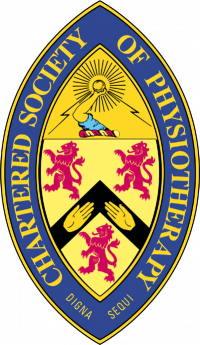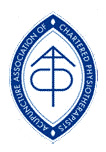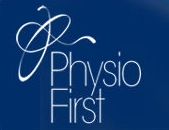 |
TELEPHONE : 07751167681 EMAIL : physiovey@aol.com |
In Clinic :
In the Clinic I am able to treat patients with most physiotherapeutic needs, with ages ranging from 2 years upwards, using any of a selection of modalities. Assessments are thorough and holistic, and reassessed at each appointment. Goals are set with the patients and care plans are formulated.
Manual therapies are the most beneficial as the patient contact has an affirming effect. These modalities include Maitland
mobilisations, deep tissue massage, and Myofascial trigger point work.
Electrotherapy is used as an adjunct to the Manual techniques, including Ultrasound, Interferential Therapy, TENS, Laser, and
Biofeedback.
Tailored exercise programmes are devised for each patient, and these are drawn from a pool of personally invented and prescribed programmes, including McKenzie-based exercises, Modified Pilates, Core Stability work, Balance awareness, Proprioception training and strengthening exercises.
Sports Injury Rehabilitation is sports-specific and leads to re-training and returning to the patient's sport, whether it is rowing, running, korfball, tri-athlon, tennis, freestyle frisbee, golf or horse riding.
Acupuncture for pain relief. Having gained a post-graduate qualification in 2003, at the OCE in Oxford, I am a member of Association of Acupuncturists in Chartered Physiotherapy.
Relaxation techniques are used to promote a feeling of wellbeing, and are used to reduce anxiety. One of the most useful modalities I use is the modified Mitchell technique.
Breathing exercises are used in many respiratory conditions. The Active Cycle of Breathing Technique is used to clear respiratory congestion and improve functional capacity. Breathing control can also prevent bronchospasm and ease asthmatic problems.
If the patient wishes to have a chaperone they are welcome to bring someone with them.
Domiciliary :
Domiciliary visits are reserved for patients who are unable to get to the clinic, for example immediate post operative patients or those unable to drive due to fractures.
At patients' own homes the treatment is more tailored to the environment, the home.
Manual therapies are used to relieve muscle tension and realign vertebrae if displaced. Manual therapies are the most beneficial as the patient contact has an affirming effect. These modalities include Maitland mobilisations, deep tissue massage, and Myofascial trigger point work.
Exercises can be specially modified to fit the patient's home to enable greater compliance. Tailored exercise programmes are devised for each patient, and these are drawn from a pool of personally invented and prescribed programmes, including McKenzie-based exercises, modified Pilates, Core Stability work, Balance awareness, Proprioception training and strengthening exercises.
Breathing exercises are used in many respiratory conditions. The Active Cycle of Breathing Technique (ACBT) is used to clear respiratory congestion and improve functional capacity. Breathing control can prevent bronchospasm and ease asthmatic problems.
Neurological Rehabilitation is often more easily treated in the home environment, because everything is more familiar and the programme can be made specifically for the individual. Neurological conditions treated include Stroke, Parkinson's Disease and Multiple Sclerosis.
Therapy is usually also permitted in Nursing home and Residential Care home with the permission of the Care Home owners.
Acupuncture:
Acupuncture for Pain relief.
Acupuncture is an ancient treatment technique which has evolved over the past 3,000 years. Using acupuncture points on Meridian that are found throughout the body the body’s natural energy (Qi) is re-balanced. Points are used both near the area of pain and distal to it, so that if the area is too sensitive remote points can still treat and clear the pain.
More recently it has been adopted by western medicine for the treatment of pain. Treatments are based on scientific research and clinical evidence that shows Acupuncture can reduce pain. This is achieved through needling Acupuncture points that stimulate the brain and central nervous system. This then releases Endorphins, Serotonin and Melatonin, which are the body’s natural painkiller, wellbeing and sleep promoter.
After an assessment, Acupuncture needles are placed in specific Acupuncture points, the treatments last approximately 20-30 minutes, and although the number of points required varies, on average 4-18 points may be used.
Respiratory:
Respiratory physiotherapy is a specialist field dealing with the prevention of, and rehabilitation, from lung disease. Conditions treated include:
- Anxiety
- Asthma
- Breathlessness
- Bronchiectasis management
- COPD
- Exercise tolerance
- Persistent Cough
- Pleurisy
- Productive Cough
Breathing exercises can be used to improve Lung Function, and therefore Oxygen delivery, and can strengthen the respiratory muscles to enable greater exercise tolerance. The treatments are all tailored to the individual’s need following a thorough assessment, and then a care plan is devised. The Active Cycle of Breathing Technique (ACBT), Postural Drainage and manual therapies are used to re-train the respiratory muscles. Modified Mitchell and relaxation techniques are use to ease exhausting and debilitating respiratory conditions.



 Copyright Physiovey 2025.
Copyright Physiovey 2025.